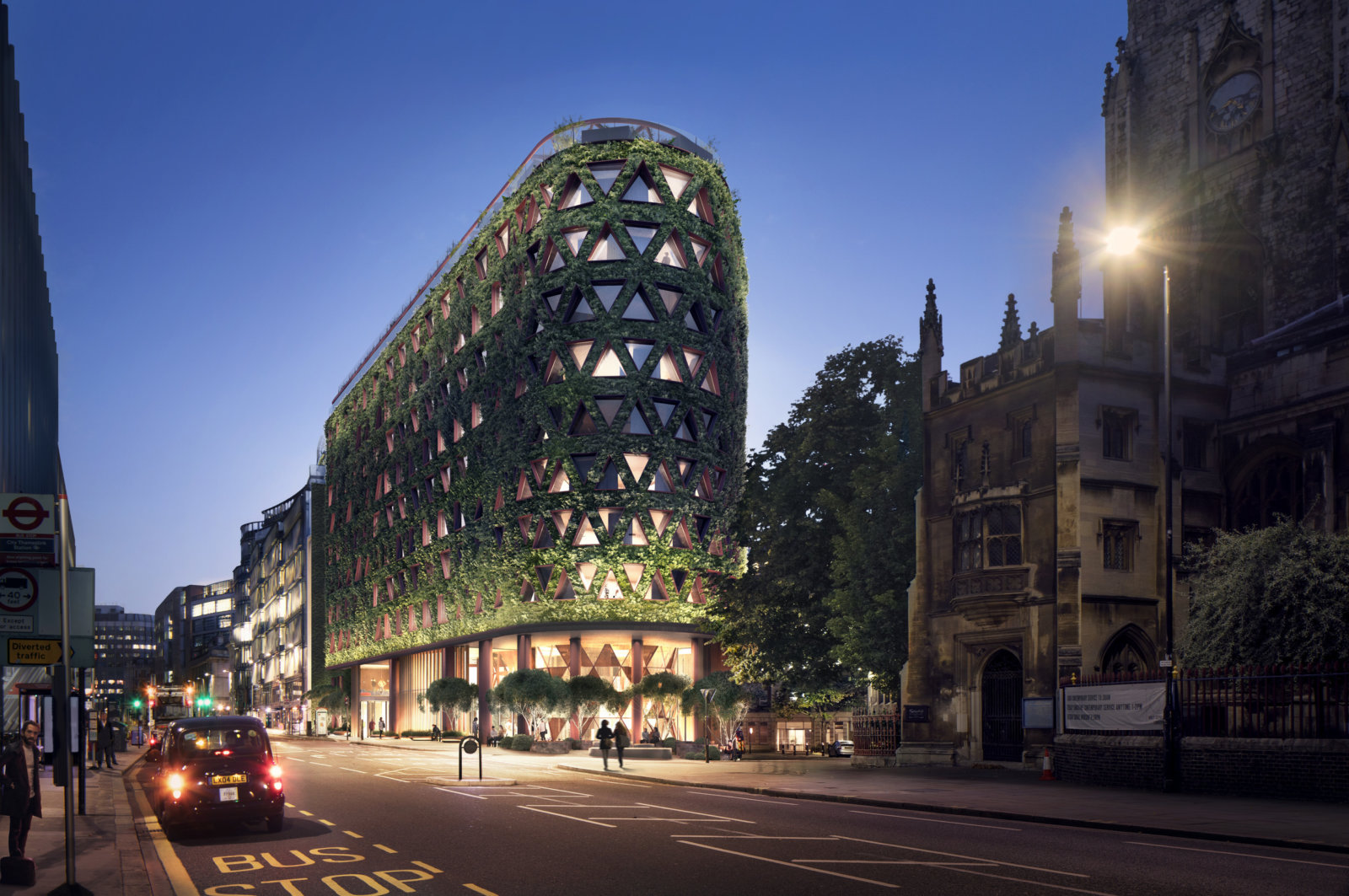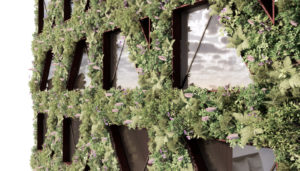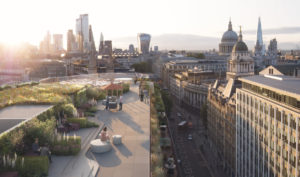

The wall will contain 400,000 plants and produce 6 tonnes of oxygen each year.
British architecture firm and interior design company Sheppard Robson has unveiled plans to create a building in London that will feature the “largest living wall in Europe” in a bid to increase air quality in the capital.
The wall will contain 400,000 plants and be able to absorb more than 8 metric tonnes of carbon annually.
Based on an existing office block in the Holborn Viaduct, the building, called Citicape House, would be able to produce 6 tonnes of oxygen each year and will have a rooftop gallery and wildflower meadow, according to Sheppard Robson.
The living wall would also help to lower the temperature in the local area by three to five degrees Celsius, planners at the firm say.
Partner at Sheppard Robson, Dan Burr, told architecture and design magazine Deezen, “We are very conscious to avoid ‘greenwash.’ The facade composition expresses the truss that sits behind it so there’s an integrity to the architecture.”
Sheppard Robson’s project adds to the growing theme of urban greening and initiatives that aim to better the climate in London. Two years after London’s vision for the Garden Bridge – a pedestrian-only bridge covered in plants and flowers – failed, starting with a building that could tackle some of London’s most urgent environmental issues might be slightly more achievable.
According to the firm, the wall would also help to improve local air quality by trapping approximately 500kg of particulate matter per year – fine particles in the air that become air pollutants (PM 2.5 and PM10 specifically).
 Architectural Assistant at Architype, Hayley Crone, told Raven News, “It’s enjoyable to see that if the construction of new, ambitious buildings in London is possible, it’s equally as possible to give new life to old ones.
Architectural Assistant at Architype, Hayley Crone, told Raven News, “It’s enjoyable to see that if the construction of new, ambitious buildings in London is possible, it’s equally as possible to give new life to old ones.
“Hydroponic technology is a great way to ensure that the building won’t be weakened by tonnes of soil, and the building can actually do what it’s meant to do, hopefully bring down levels of toxic air in the surrounding area,” she continued.
“The building looks to propose a very particular challenge, but it’s a step in the right direction!”
“We thought about how our design can positively influence the dense urban fabric of the City,” Burr said. “How does a building on such a tight site, hemmed in by a busy vehicular thoroughfare on one side and by hard glass and masonry buildings on all other sides, make the most meaningful green impact?”
Making the most ‘meaningful green impact’ in a city like London isn’t limited to architecture firms – footwear company Timberland announced earlier this month its commitment to plant 50 million trees over the next five years.
Part of its Nature Needs Heroes campaign, the company are also collaborating with London-born and based musician, Loyle Carner. The singer/songwriter is releasing a mini-series around the topic of urban greening in his hometown of Croydon.
The collaboration will see three spaces in Croydon renovated and transformed into green oases and community areas, and will include a community square in Thornton Heath, a garden in the BRIT School (a performing arts and technology school), and a green renovation of a block of city flats.
In response to the collaboration, Carner said: “I’m just trying to make my city a little greener. My dad used to plant trees in the city and I’m just following in his footsteps.”
All photos courtesy of Sheppard Robson.
